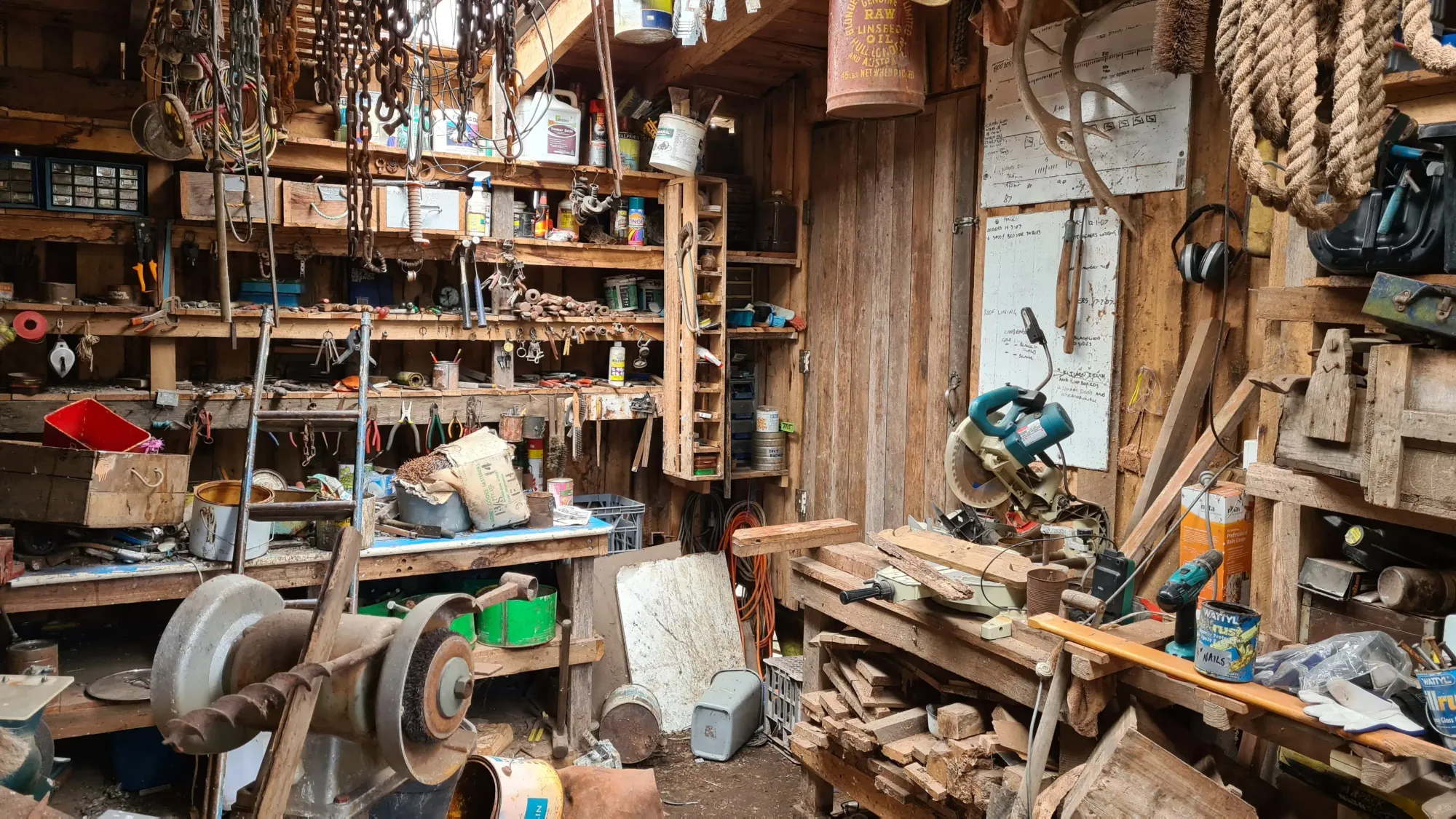Shop Upgrade - Stage 1

Part of the house buying criteria when I purchased a house in 2022 was either an existing shop space or enough room to construct a new shop somewhere on the property. As fate would have it, the place I settled on had a small shop attached, 20 feet by 24, behind the detached garage. While it did have power, it was in the form of a single 20 amp circuit. This meant all 220V tools, like full-size table saws or band saws, were out of the question. A power upgrade was in order.
The big wrinkle in this plan was complicated by several factors. The main one being the detached nature of the shop. The existing power, one circuit to the shop and one to the garage, was buried in the ground. The conduit used, given the distance from the panel, limited the potential sub-panel to 50A, which seemed adequate to power a nice woodworking shop. The rub is that with the recent shift to electric cars, it was obvious that an electric car charger would be needed in the garage. These usually run a minimum of 30A for the Level-2 chargers, which put a bit of a strain on the 50A budget. So plans for a new conduit ran began.
This is when the architecture of the house introduced some more complications. The house is a brick exterior and the electrical panel is in the basement, attached to a concrete foundation wall. Drilling was out of the question, as the tools involved to drill through rebar reinforced concrete are rather industrial in nature. Tapping the existing meter panel would be far easier, and as luck would have it, the meter and panel on the house were already upgraded to a 325A service. This meant that the panel was rated to have a full second set of service wires installed in the lugs. The end result? This little detached garage and shop now has access to as much power as the typical American house: 200A.
Why go for this much power when all load estimates didn’t exceed 70 to 80 amps? Cost. The price difference between the panel, wire and conduit for a 100A panel and a 200A one wasn’t enough to not just go for the full size and never worry about it for a very long time. This sort of project is not one that lends itself to incremental upgrades, so buy once, cry once as they say.
After digging through the electrical catalogs, I noticed a detail that needed consideration. The design for the meter panel revealed that the utility and house wires were in the same chamber. This is different from typical 200A meter panels which usually have them in separate chambers such that pulling the meter makes it safe to work on the house side without the danger of contacting the still-live line side conductors. Given that disconnecting the meter would not de-energize the panel such that I was comfortable working on it, I deferred to an actual electrician to install a disconnect off the meter panel. These external disconnects are now code, so while this technically was required in any case for service panels in my area, it also also provided a safer means of working with the wiring.
With the disconnect installed and ready to go, it was time to fight the service wires through the conduit. Due to the price of PVC with the supply chain crushed by the pandemic, the de facto 3-inch conduit was too expensive by a factor of almost 250% compared to 2-inch. While the 2-inch was an allowed size, it was at the limit of fitting the wires through, plus the run had the full 360 degress worth of bends. There were some regrets part-way through about not spending the money and it took several days of shoving but it got through in the end and landed at the panel.
Before going any further, it was time to address the floor of the shop. It was rather cracked and chipped, and there was a board being used as a control joint. From several contractors, it was apparent that the floor was too far gone; if some work had been done over the years to repair it, there may have been a chance to not have to rip it all out. Alas, it all had to go, which wasn’t great timing weather-wise, as there was a bit of a cold-snap with the highs in the low 30s for the week the work was scheduled.
And with the new concrete floor in place, that's where progress ended for 2022. As is usual with projects of this scale, there were more issues requiring more time than anticipated. But just getting the new electrical service run was a huge step.